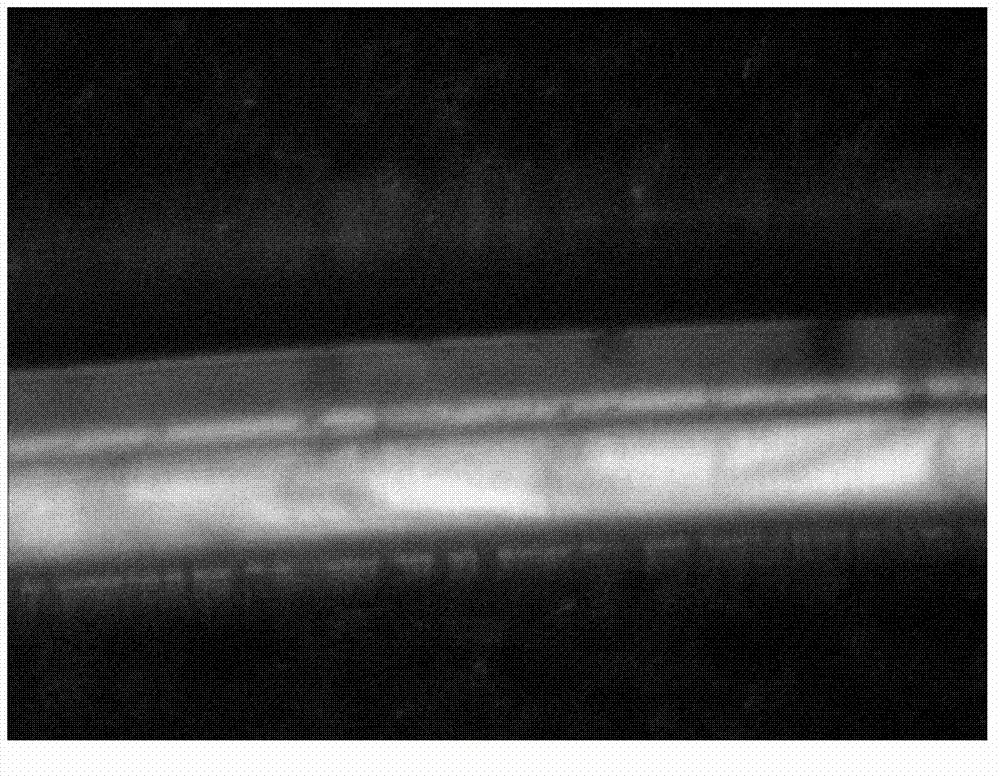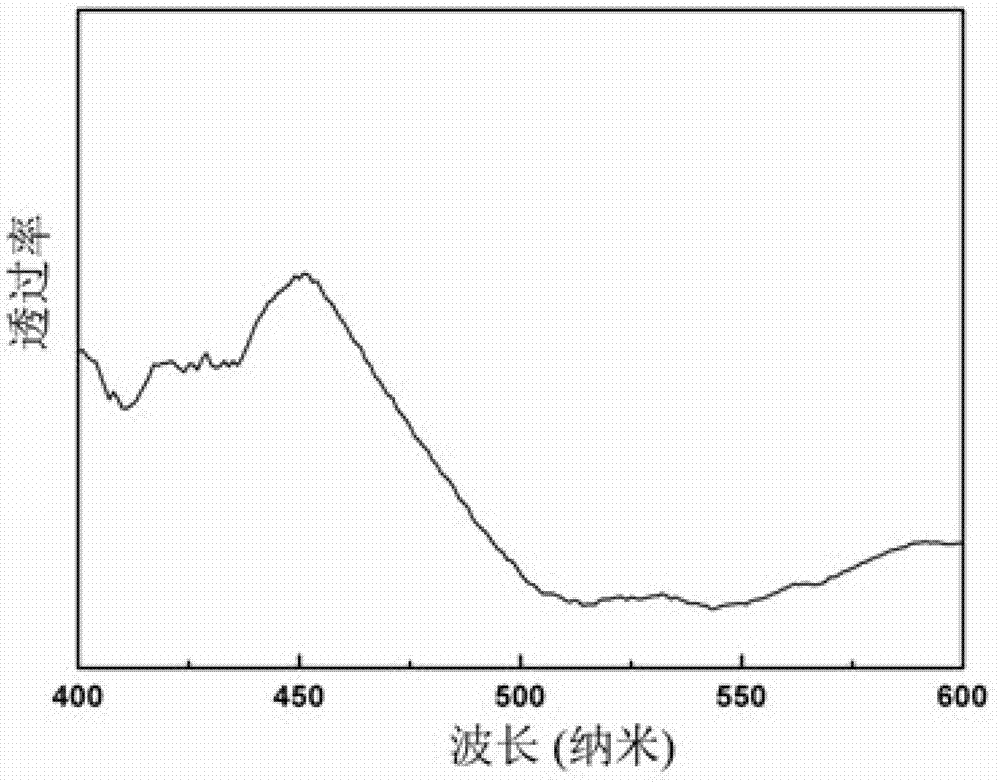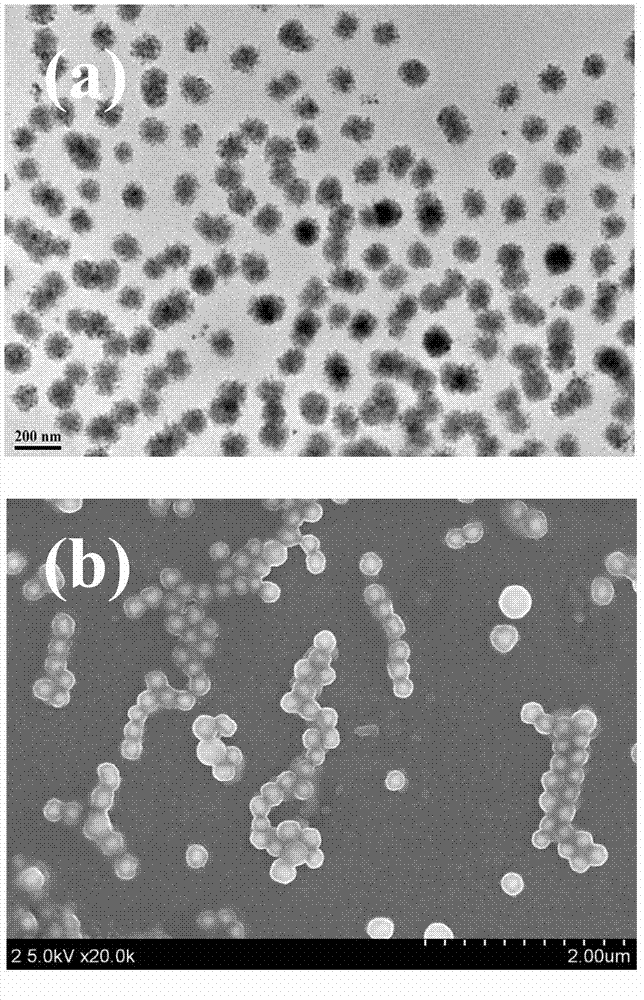Method for preparing magnetic-induced discoloration polymeric fibers
A polymer fiber and magneto-induced technology, applied in fiber treatment, textile and papermaking, physical treatment, etc., can solve problems such as weak binding force, achieve good effect, simple operation, and excellent optical performance
- Summary
- Abstract
- Description
- Claims
- Application Information
AI Technical Summary
Problems solved by technology
Method used
Image
Examples
Embodiment 1
[0032] Prepare lotion I, the volume ratio of concentrated sulfuric acid, hydrogen peroxide, and distilled water is 4:1:20; lotion II, ammonia water, hydrogen peroxide, and distilled water = 1:4:20, soak the glass microtube and polymer fiber in lotion I Soak in 110°C for 30 minutes, rinse with deionized water, then soak the microchannel and glass fiber in lotion II for 30 minutes at 60°C, rinse with deionized water, and dry; at room temperature, Measure 0.5g ferrocene, measure 60mL acetone, 2.5mL hydrogen peroxide and place in a beaker, stir magnetically for 40 minutes at a stirring speed of 300rpm, put the reaction solution into the reaction kettle and adjust the filling degree to 4 / 5, in React at 220°C for 60 hours, cool naturally to room temperature, centrifuge the product, and wash to obtain Fe 3 o 4 nanospheres, and disperse them in 30mL of acetone solution; the above solution is uniformly mixed with polyethylene glycol diacrylate (PEGDA) in a volume ratio of 4:1, and pla...
Embodiment 2
[0034] Prepare lotion I, the volume ratio of concentrated sulfuric acid, hydrogen peroxide, and distilled water is 4:1:20; lotion II, ammonia water, hydrogen peroxide, and distilled water = 1:4:20, soak the glass microtube and polymer fiber in lotion I Soak in 120°C for 30 minutes, rinse with deionized water, then soak the microchannel and glass fiber in lotion II for 30 minutes at 70°C, rinse with deionized water, and dry; at room temperature, Measure 0.7g of ferrocene, measure 52.5mL of acetone and 2.5mL of hydrogen peroxide into a beaker, stir magnetically for 25 minutes at a stirring speed of 500rpm, put the reaction solution into the reactor and adjust the filling degree to 3 / 4, React at 200°C for 72 hours, cool naturally to room temperature, centrifuge the product and wash to obtain Fe 3 o 4 nanospheres, and disperse them in 30mL of acetone solution; the above solution is uniformly mixed with polyethylene glycol diacrylate (PEGDA) in a volume ratio of 2:1, and placed in...
Embodiment 3
[0036] Prepare lotion I, the volume ratio of concentrated sulfuric acid, hydrogen peroxide, and distilled water is 4:1:20; lotion II, ammonia water, hydrogen peroxide, and distilled water = 1:4:20, soak the glass microtube and polymer fiber in lotion I Soak at 130°C for 30 minutes, rinse with deionized water, then soak the microchannel and glass fiber in lotion II at 80°C for 30 minutes, rinse with deionized water, and dry; at room temperature, Measure 0.3g of ferrocene, measure 37.5mL of acetone and 2.5mL of hydrogen peroxide into a beaker, stir magnetically for 10 minutes at a stirring speed of 800rpm, put the reaction solution into the reactor and adjust the filling degree to 1 / 2, Reaction at 180°C for 84 hours, naturally cooled to room temperature, the product was centrifuged and washed to obtain Fe 3 o 4 nanospheres, and disperse them in 30mL of acetone solution; the above solution is uniformly mixed with polyethylene glycol diacrylate (PEGDA) at a volume ratio of 1:4, a...
PUM
 Login to View More
Login to View More Abstract
Description
Claims
Application Information
 Login to View More
Login to View More - R&D
- Intellectual Property
- Life Sciences
- Materials
- Tech Scout
- Unparalleled Data Quality
- Higher Quality Content
- 60% Fewer Hallucinations
Browse by: Latest US Patents, China's latest patents, Technical Efficacy Thesaurus, Application Domain, Technology Topic, Popular Technical Reports.
© 2025 PatSnap. All rights reserved.Legal|Privacy policy|Modern Slavery Act Transparency Statement|Sitemap|About US| Contact US: help@patsnap.com



